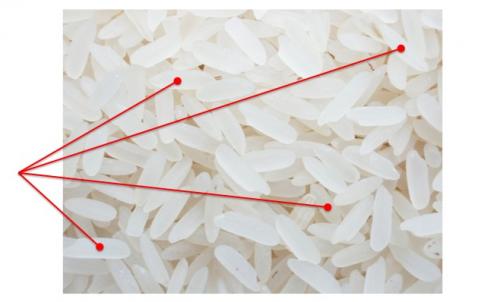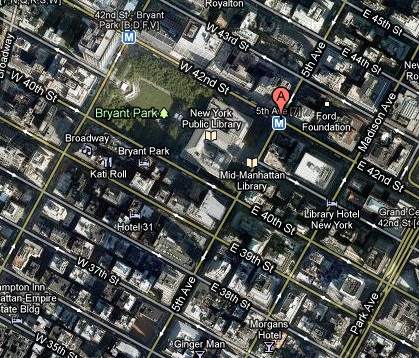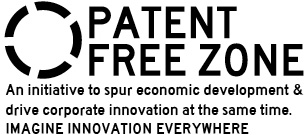How We Work
Imagine you own a pharmaceutical company that's facing a scary future: your top-selling drug is about to go off patent. Within about five years, there will be a big hole in your revenue, so you need a good idea for how to replace it, now. Your company owns about 15,000 patents, and you're sure there's something similar to your big star in the pile. Somewhere. You put your staff of 30 patent attorneys on the job, give them all the databases they want, and you wait for an answer.
You wait for two years. Nothing.
When you start to get nervous, you call us and explain the problem: help me find the patents that are most similar to what I'm currently making.
15,000 patents is a lot. Imagine walking into your kitchen, taking a double handful of dry rice out of your cupboard, and throwing it into the air. Now find your favorite grains. Only those grains, though.

Our company, Neopatents, did it in 3 weeks. Using our software, 2 analysts found the 40 most promising patents for our client to use, out of 15,000. (Actually, that part didn't take so long— writing up the report slowed us down).
We call this process patent domain mapping, and it's what Neopatents is built on. Does this sound like something the patent free zone could use? It does to us.
Our process is a bit like using Google Maps for patents. Neopatents helps you find the patents that really matter to you and your business – from navigating patent spaces in “Patent Rich Zones” to understanding what inventions synergistically combine for immediate impact in Patent Free Zone areas.
As anyone who's been lost before knows, one street looks a lot like another on the map. From the air, whole cities look pretty similar to each other, and the features that you can pick out easily are few and far between. But cities and streets have unique, important features that matter to you: they're where your family lives, where your hotel is, where your job interview is, starting in ten minutes. Google Maps is great at helping you find and isolate the things that you care about now, so you can give people directions to your house, pick the closest hotel to your destination, or get to your job interview. We do the same thing for you with patents.
You wait for two years. Nothing.
When you start to get nervous, you call us and explain the problem: help me find the patents that are most similar to what I'm currently making.
15,000 patents is a lot. Imagine walking into your kitchen, taking a double handful of dry rice out of your cupboard, and throwing it into the air. Now find your favorite grains. Only those grains, though.

Our company, Neopatents, did it in 3 weeks. Using our software, 2 analysts found the 40 most promising patents for our client to use, out of 15,000. (Actually, that part didn't take so long— writing up the report slowed us down).
We call this process patent domain mapping, and it's what Neopatents is built on. Does this sound like something the patent free zone could use? It does to us.
Our process is a bit like using Google Maps for patents. Neopatents helps you find the patents that really matter to you and your business – from navigating patent spaces in “Patent Rich Zones” to understanding what inventions synergistically combine for immediate impact in Patent Free Zone areas.
As anyone who's been lost before knows, one street looks a lot like another on the map. From the air, whole cities look pretty similar to each other, and the features that you can pick out easily are few and far between. But cities and streets have unique, important features that matter to you: they're where your family lives, where your hotel is, where your job interview is, starting in ten minutes. Google Maps is great at helping you find and isolate the things that you care about now, so you can give people directions to your house, pick the closest hotel to your destination, or get to your job interview. We do the same thing for you with patents.
Where do you want to go?
Just as with Google Maps, you need to know where you want to go first. Here are the kinds of destinations we can help you with.
I want to find the best diabetes technology for my company to invest in now.
We can help. We'll need to learn a little about what your company does already, what kinds of techniques and equipment you have available, and then we can start to offer suggestions. We will do something similar to what we did for our clients: start by looking at the universe of diabetes patents (currently, about 12,000). We'll first create a map of the current landscape. This gives you a high-level overview of trends in diabetes.
It's a bit like looking at a picture of all of Manhattan.
Just as with Google Maps, you need to know where you want to go first. Here are the kinds of destinations we can help you with.
I want to find the best diabetes technology for my company to invest in now.
We can help. We'll need to learn a little about what your company does already, what kinds of techniques and equipment you have available, and then we can start to offer suggestions. We will do something similar to what we did for our clients: start by looking at the universe of diabetes patents (currently, about 12,000). We'll first create a map of the current landscape. This gives you a high-level overview of trends in diabetes.
It's a bit like looking at a picture of all of Manhattan.

You can see the overview: Central Park, a few neighborhoods. What's it good for? General orientation. If you're talking to a New Yorker, she can point out where she lives. In the world of patents, you can see what's out there in a given technological area.
Next, we'll select based on your priorities. In the case of diabetes, do you want injectibles? Are you looking for the next generation of what you're already making? Do you want to expand your current offerings? Are you looking for what's most similar to what you have? This will give you a short list of patents to consider. This is a guided tour where we point out some sights in the neighborhood you've chosen to investigate.

Finally, we come down to street level, where we'll show you exactly what happens in the particular patent neighborhood you've chosen.

We'll show you how patents in a particular sector fit together, where there are gaps, and what the best possibilities for new combinations of technology are.

